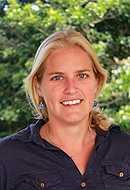05 Sep Adverse Birth Outcomes and Agricultural Pesticide Use in the San Joaquin Valley of California
MedicalResearch.com Interview with:
Ashley Larsen, PhD
Assistant professor
Bren School of Environmental Science & Management
University of California, Santa Barbara
MedicalResearch.com: What is the background for this study? What are the main findings?
Response: The relationship between pesticides and adverse birth outcomes has been recognized as an important question for quite some time, and there have been many good studies on the topic. Since randomly exposing people to different levels of pesticides is clearly unethical, researchers focused on the health consequences of non-occupational pesticide exposure often have to choose between detailed studies that follow a couple hundred or couple thousand individuals through pregnancy or larger scale studies that use easier to observe, but less accurate metrics of pesticide exposure (e.g. nearby crops or crop types). Here we tried to provide complementary insight by bridging the gap between detail and scale using detailed pesticide use data and individual birth certificate records for hundreds of thousands of births in an agriculturally dominated region of California. While we found negative effects of pesticide use on birth outcomes including low birth weight, preterm birth and birth abnormalities, these effects were generally in the magnitude of a 5-9% increase in probability of an adverse outcome, and only observed for individuals exposed to very high levels of pesticides.
MedicalResearch.com: What should clinicians and patients take away from your report?
Response: We find evidence that there are negative birth outcomes associated with pesticide exposure, but these effects are generally less than a 10% increase in the probability of adverse outcomes and generally only observed for individuals exposed to very high levels of pesticides during gestation. If we can identify where and why these extremely high levels of use are occurring near human settlements, policy makers and health workers may be able to mitigate the health consequences of pesticide use observed in this study.
MedicalResearch.com: What recommendations do you have for future research as a result of this study?
Response: Pesticide use will vary based on the crops in production, seasonality, weather and environmental regulation, among other factors. Further, the health consequences of pesticide use will vary with factors such as the configuration of agricultural and residential land uses, and the vulnerability of the surrounding population. More research is needed to understand the contributions of these different components to pesticide-associated health outcomes in agricultural communities. More broadly, an important and enormous challenge is to parse apart which chemicals and mixtures of chemicals that are in the environment simultaneously are most damaging. Here we aggregated pesticide active ingredients used nearby the mother’s address during gestation and by trimester because numerous chemicals are used in a small spatial and temporal window, and we do not have a great understanding of how these different chemicals interact with each other in the environment. However, identifying the responsible chemical or combination of chemicals would, of course, be extremely valuable to policy makers and the public.
MedicalResearch.com: Is there anything else you would like to add?
Response: We have no disclosures or conflicts of interest. The only funding behind this work was from the University of California.
MedicalResearch.com: Thank you for your contribution to the MedicalResearch.com community.
Citation:
Ashley E. Larsen, Steven D. Gaines, Olivier Deschênes. Agricultural pesticide use and adverse birth outcomes in the San Joaquin Valley of California. Nature Communications, 2017; 8 (1) DOI: 10.1038/s41467-017-00349-2
Note: Content is Not intended as medical advice. Please consult your health care provider regarding your specific medical condition and questions.
[wysija_form id=”5″]
Last Updated on September 5, 2017 by Marie Benz MD FAAD

